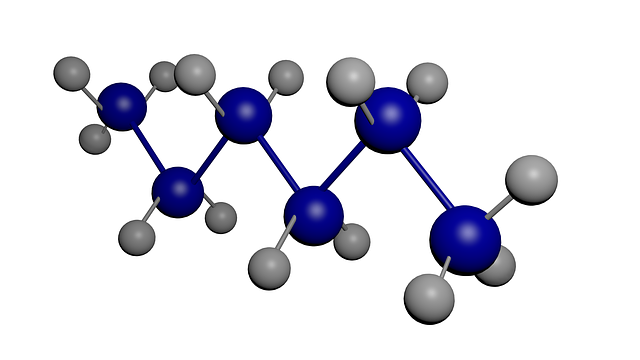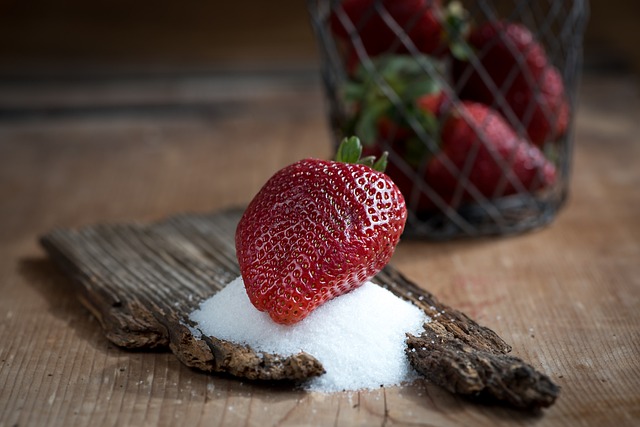Depending on how their molecules interact, two or more substances may behave differently when combined to produce a solution. While some solutions behave in an ideal manner and some are do not behave in an ideal manner.

What is an Ideal Solution?
A solution that perfectly complies with Raoult’s Law at all temperatures and concentrations is considered optimal. A component’s partial vapour pressure in a solution is directly proportional to its mole fraction, according to Raoult’s Law.
Azeotropes: A binary mixture of liquids having the same composition in liquid and vapour phase which boils at a constant temperature is called azeotrope.
Azeotropes have sharp boiling point like a pure liquid. Components of azeotropic mixture cannot be separated by fractional distillation.
Following are the azeotropes:-
(i) Minimum boiling azeotrope:- Minimum boiling azeotrope is formed by solutions which show a large positive deviation from Raoult’s law i.e.; 95% ethanol by volume in water forms azeotropic mixture which has constant boiling point 351.15 K. They have same composition in liquid and vopour, which can not be separated by fractional distillation. That’s why pure ethanol cannot be obtained from water-ethanol mixture, obtained by fermentation of sugar.

(ii) Maximum boiling azeotrope : Maximum boiling azeotrpoe is formed by solutions that show large negative deviation from Raoult’s law e.g.; aqueous nitric acid (68% HNO3 and 32% H2O by mass) is an azeotropic mixture which has a constant boiling point 393.5 K.
In an ideal solution:
The solute and solvent have intermolecular forces that are comparable to those found in pure substances. When the components are mixed, the enthalpy (heat energy) remains unchanged (ΔH mix = 0). When mixing, the volume does not change (ΔV mix = 0).
Examples of Ideal Solutions
Toluene and benzene mix well because of their similar chemical composition.
2. The intermolecular forces of n-hexane and n-hexane are about the same.
3. Methanol and ethanol share a lot of similarities in their molecular structure and hydrogen bonding.
Ideal solutions do not exhibit any notable changes in their characteristics because the forces of attraction are constant before and after mixing.
What is a Non-Ideal Solution?
A solution that deviates from Raoult’s Law (it states that the partial pressure of each component of an ideal mixture of liquids is equal to the vapor pressure of the pure component (liquid or solid) multiplied by its mole fraction in the mixture. In consequence, the relative lowering of vapour pressure of a dilute solution of nonvolatile solute is equal to the mole fraction of solute in the solution.) is considered non-ideal.
This occurs when the solute and solvent molecules’ intermolecular forces differ from those in their pure forms. Variations in vapour pressure, enthalpy, and volume follow. Based on their variances, non-ideal solutions are divided into two categories:
Positive Deviation from Raoult’s Law
When the vapour pressure is higher than anticipated, a solution exhibits positive deviation. This happens when:
Compared to pure components, the solute-solvent interactions are weaker.

• The vapour pressure rises as a result of the molecules’ tendency to escape.
• The energy is absorbed instead of released when the enthalpy change is positive (ΔH mix > 0).
Examples of Positive Deviation:
Ethanol with Acetone: Acetone breaks the hydrogen bond in ethanol, which facilitates evaporation.
Compared to their pure forms, the molecules of carbon tetrachloride (CCl₄) and chloroform (CHCl₃) have lesser forces of attraction when in solution.
The molecules of water and ethanol form a strong hydrogen bond. This bonding is weakened by the addition of ethanol, which raises the vapour pressure.
Negative Deviation from Raoult’s Law
A solution shows negative deviation when the vapor pressure is lower than expected. This happens when:
The solute-solvent interactions are stronger than those in pure components.
The molecules hold on to each other more tightly, making evaporation difficult.
The enthalpy change is negative (ΔH mix < 0), means energy is released upon mixing.
Examples of Negative Deviation:
Water and HCl – Strong hydrogen bonding and dipole interactions cause the solution to have lower vapour pressure.
Acetone and Chloroform – These molecules form strong hydrogen bonds, reducing evaporation.
Water and Nitric Acid (HNO₃) – The strong intermolecular forces between these molecules lower the vapour pressure.
Differences Between Ideal and Non-Ideal Solutions
Feature | Ideal Solution | Non-Ideal Solution |
Follows Raoult’s Law | Yes | No |
Change in Enthalpy (ΔH mix) | Zero | Positive or Negative |
Change in Volume (ΔV mix) | Zero | Positive or Negative |
Intermolecular Forces | Remain the same | Change upon mixing |
Examples | Benzene & Toluene, Hexane & Heptane | Water & Ethanol, Acetone & Chloroform |
Summary:-
Ideal and non-ideal solutions, particularly in areas such as material sciences, chemical engineering, and medicines are being used. Raoult’s Law is perfectly followed in ideal solutions, but most of the solutions exhibit variations because of shifting intermolecular interactions. On the of the basis of properties, scientists can predict how substances will mix and behave, which helps in designing medicines, industrial solvents, and fuel mixtures efficiently.
Note :-
Zeotropes: Those solution which do not boil at the same temperature i.e. their composition changes on distillation are called zeotropes. The components of zeotrope can be separated by fractional distillation.
Raoult’s Law is perfectly followed by ideal solutions, which means that the intermolecular interactions between the solute and solvent don’t change. Changes in intermolecular forces cause non-ideal solutions to vary from Raoult’s Law, either positively or negatively.
An ideal solution has the following properties:
Follows Raoult’s Law strictly.
No change in enthalpy (ΔH mix = 0).
No change in volume upon mixing (ΔV mix = 0).
The intermolecular forces between solute and solvent are similar.
Yes, some common examples of ideal solutions include:
Benzene and Toluene
n-Hexane and n-Heptane
Ethanol and Methanol
These solutions show similar intermolecular forces before and after mixing.
When solute-solvent interactions are weaker than in pure components, such as in ethanol and acetone, a phenomena take place that known as positive deviation, which raises the vapour pressure. When solute-solvent interactions are stronger than in pure components, such as in acetone and chloroform, the vapour pressure is lowered, a phenomena known as negative deviation.
In non-ideal solutions, the formation of new solute-solvent interactions leads to:
Positive enthalpy change (ΔH mix > 0) when weaker interactions form (energy is absorbed).
Negative enthalpy change (ΔH mix < 0) when stronger interactions form (energy is released).